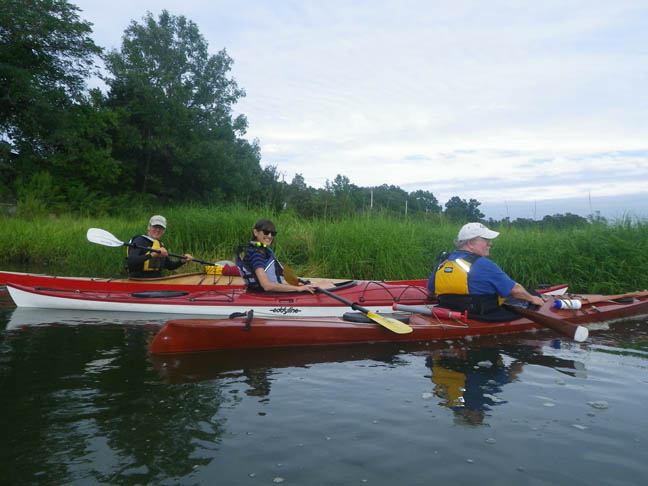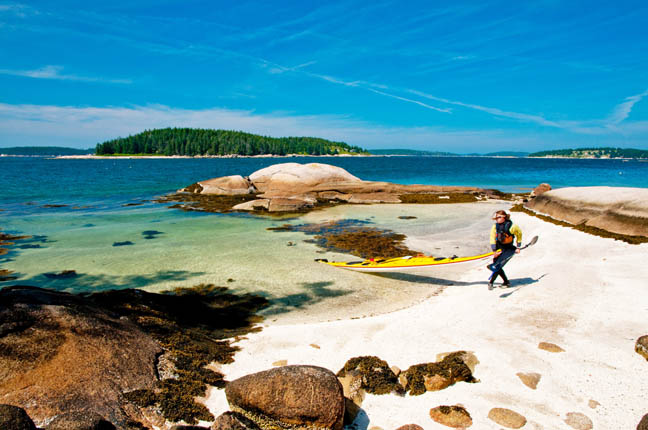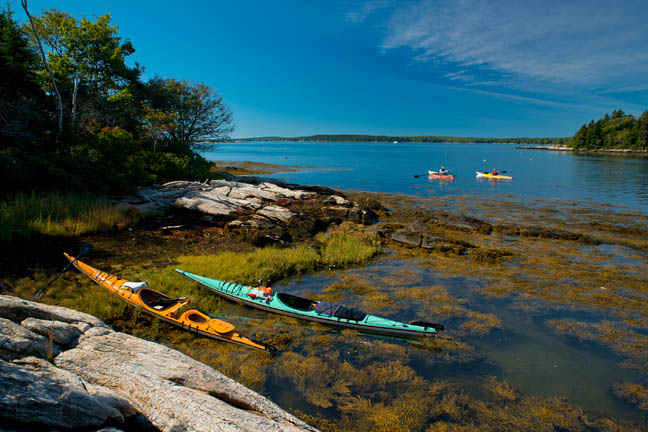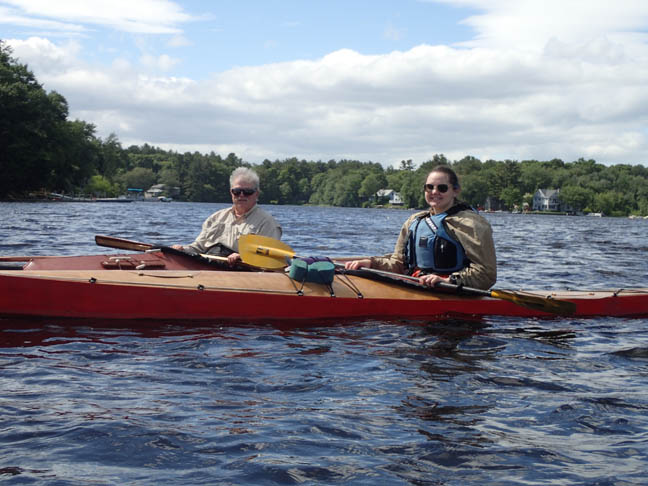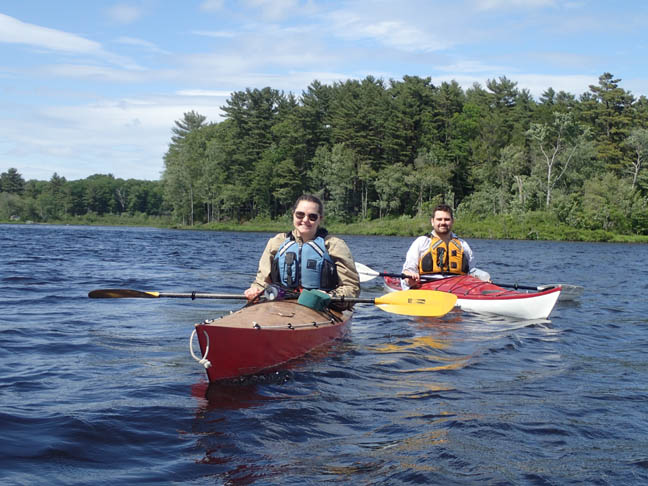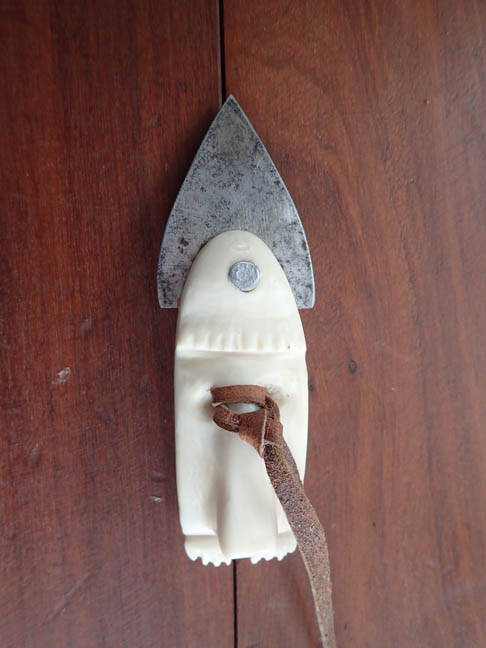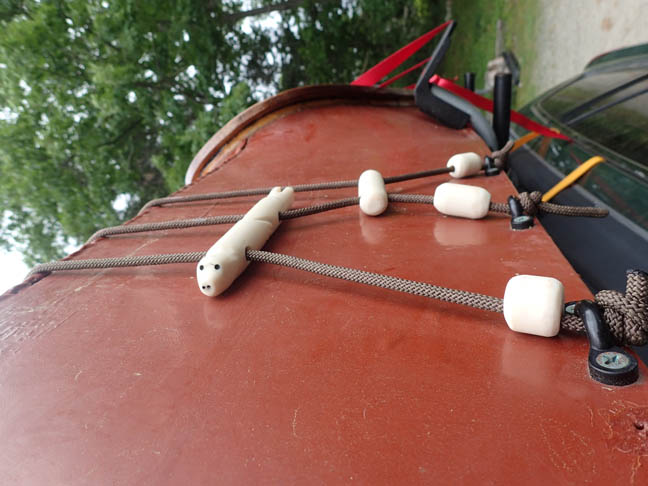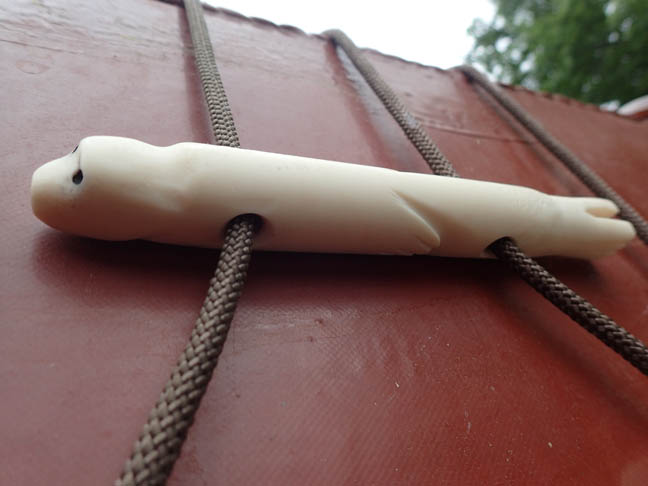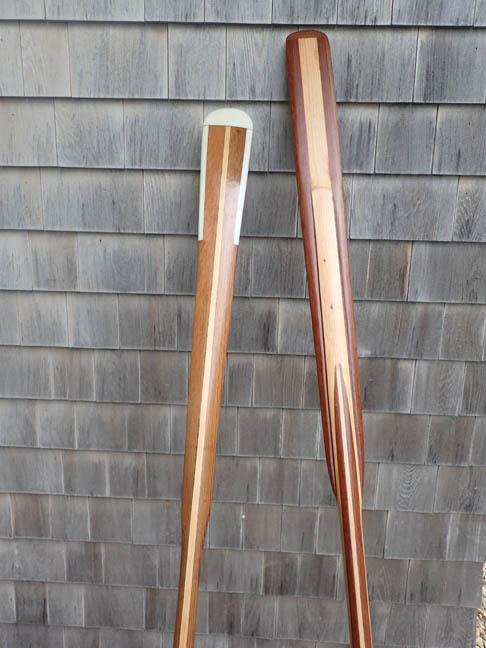Image courtesy of Sea Spray Kayaking
By Tamsin Venn
Our current issue features some great tips and advice on what the camp counselors have to say about the fun kids have learning at kayak camp. We talked to Scott Shea, owner of SeaSpray Kayaking and Paddleboarding on the New Meadows River in midcoast, Maine. Shea is a long-term outdoors teacher and father of three sons so he’s in a good position to know.
“We’ve had kids who started in our kids camp when they were 11, now they are out of college, got their Maine Guide License, and are actually guiding for us… and they have full time jobs. It’s neat to see the interest sparked early and that it’s something that continues for personal and professional reasons,” says Shea.
Seaspray offers half-day and full-day camps for kids starting at age eight. It used to have half-day morning camps for just the younger kids, to keep their attention and to avoid the afternoon sea breezes that the older kids could handle better. But now Seaspray gives a choice of a half day or full day for everybody.
“That’s worked out. The kids know what they like, whether they want to be outdoors all day. The biggest thing we’ve found in teaching kids is that they learn by doing. The adults want to know precisely about what their body position should be, but the kids just kind of watch, and say ‘Hey I can do that,’ and then do it. Younger kids wonder how to do a roll. You just set them up and give them a feeling of what to do and they’re rolling. Adults don’t allow their brains to relax and feel it,” says Shea, psyched by his young students’ can-do attitude.
“With the kids, combining all kinds of challenges and games with the instruction works well. In wet exits, we tell them to hit the hull of the kayak before they release the spray skirt, they do it 51 times, so the next person has to get 52. We don’t have to say anything to keep them relaxed under water, it’s neat to see the kids push one another. They’re learning what they don’t even realize they’re learning. When we get into rescues, we treat it as a game. If they capsize, it’s fun to get the gear, get reoriented, and get paddling versus something that has to be really scary.”
Other activities include sailing with umbrellas or tarps, scavenger hunts, tugs of war, and fishing. SeaSpray offers week-long camps June through August at seven locations in Maine from West Bath to South Portland. It also has an advanced overnight camp and a fishing camp in Falmouth. Like the coast of Maine, every camp is a little different, Shea notes, with wide open ocean and surfing off Cape Elizabeth. Some areas are better for fishing, and some for whitewater. (Seaspray also sponsors a kids’ fishing tournament every year.)
Regarding the use of mobile devices, “The only break they get is snack time or lunch time, We don’t even have to say anything. We don’t have the downtime, so kids can’t go running over to use their devices,” says Shea.
Shea is highly experienced in outdoor teaching. Notably, he is the father of three sons, ages 12, 14, and 18. “They love the outdoors, so that’s always a nice thing,” he says of his three boys. He continues to take any outdoor ed class he can, and he’s gone through all the Maine Guide licenses in the state.
Age appropriate gear is essential. “The kids get free rentals for the rest of the summer, so they’ll bring their parents, and the parents are shocked on how well their children just take off. They didn’t think they could go that fast and that long. A lot of it is in the kayaks they are in. The number one thing parents should understand is the importance of equipment.”
For more information, visit the Sea Spray Kayaking website.


